Conclusion: LC-Power LC-M27UFD – 4K Sharpness Meets High-Speed Flexibility
- What This Is About
- Who the LC-M27UFD Is Made For
- Image Character: Sharpness, Motion, and the Feeling of “Being There”
- Operation: Dedicated Buttons and an OSD That Makes Sense
- Ergonomics & Stability: Solid as It Looks
- Connectivity: HDMI & DisplayPort – All Inclusive
- HDR & Adaptive-Sync: Managing Expectations
- Everyday Profile: Work Up Top, Play Down Below, All in One
- Audio Note: Volume Control in the OSD
- What Impresses — and Where the Limits Are
- Longevity & Value Impression
- Stories from the Test Bench
- Recommendations by User Type
- Value Beyond Price
- Practical Tips for Daily Use
- Final Thought
- Test System
- TL;DR – Pros & Cons
What This Is About
The LC-Power LC-M27UFD is a monitor that aims to unite two worlds: razor-sharp 4K visuals for work, media, and photo viewing — and noticeably faster gameplay when the resolution drops to QHD or FHD. That ambition defines the conclusion here: if you’re willing to switch between resolution and refresh rate as needed, you’ll find a remarkably versatile display that adapts to both everyday tasks and after-hours gaming.
“Perfection is achieved not when there is nothing more to add, but when there is nothing left to take away.”
— a design mantra that fits surprisingly well here
Because LC-Power hasn’t left out anything essential: HDMI and DisplayPort are onboard, all cables are included, the stand is solid and stable, and dedicated buttons make operation refreshingly direct without software. It may sound trivial, but these are the details that define real comfort in daily use.
Who the LC-M27UFD Is Made For
Let’s be honest: this monitor isn’t aimed at the pure 240/360 Hz esports crowd who live in Full HD, nor is it exclusively for creative professionals chasing pixel-perfect 4K color accuracy. It’s designed to do both well — and it gives you the tools to switch freely:
- 4K (3840×2160) at 160 Hz – perfect for productivity, light photo editing, movies, and everyday desktop use where clarity matters most.
- QHD (2560×1440) at 160 Hz – the sweet spot for modern games that need fluidity and detail.
- FHD (1920×1080) at 320 Hz – when reaction time is everything and every frame counts.
That three-way flexibility is the LC-M27UFD’s real strength. It’s like having three pairs of shoes for different terrains: you don’t wear racing flats to hike, and you don’t climb mountains in loafers. LC-Power gives you the right footwear for each occasion — without making you buy a second screen.

Image Character: Sharpness, Motion, and the Feeling of “Being There”
4K Mode: Text Clarity and Calm
At native 3840×2160 resolution, a 27-inch panel looks razor-sharp. Text is clean, UI elements are perfectly proportioned, and fine details pop naturally. 160 Hz is more than enough for office work, reading, streaming, and slower-paced single-player titles where atmosphere beats twitch reflexes.
A little test anecdote: while reviewing emails one morning, the cursor seemed to “stick” at the line’s end — not because the monitor lagged, but because the eyes lingered on the crispness of the text. 4K is like a magnifying glass: you end up seeing more than you meant to.
QHD Mode (160 Hz): The Sweet Spot for Most Gamers
Switch to 2560×1440, and the second personality awakens: 160 Hz. This is the ideal compromise for most modern games — sharp, smooth, and forgiving on GPU load. Motion feels natural, controls feel immediate, and visuals stay detailed enough that edges don’t devolve into stair steps. LC-Power’s choice to prioritize this mode isn’t marketing fluff — it’s a practical, deliberate second identity for the display.
“Speed is a feature.” – a software-world truth that fits displays perfectly
FHD Mode (320 Hz): When Every Millisecond Matters
320 Hz isn’t just a number; it’s a sensation. Motion blur fades, mouse input feels instant, and micro-adjustments hit with surgical precision. A tester who plays competitive shooters summed it up: “You do less — and hit more.” That’s exactly what the high-refresh FHD mode is for. Of course, you trade away some detail, but in high-stakes matches, responsiveness is the only metric that counts.

Operation: Dedicated Buttons and an OSD That Makes Sense
We often underestimate how much usability shapes satisfaction. LC-Power uses dedicated buttons instead of a single joystick — a classic but efficient choice. It’s faster, more accurate, and consistent. The OSD (on-screen display) is structured logically, without unnecessary nesting.
- Game+ covers HDR toggle, Adaptive-Sync, image enhancement, and “Game Assist” tools.
- Picture Settings include brightness, contrast, Eco mode, sharpness, and a blue-light filter.
- PiP/PbP lets you position and resize picture-in-picture or picture-by-picture windows — ideal for multitasking or monitoring multiple sources.
- I/O Settings allow toggling DSC, DDC/CI, Quantization Range, and Quick Start options.
In short: everything essential is here, and nothing feels gimmicky. A monitor that doesn’t “train” you — it just helps you.
Ergonomics & Stability: Solid as It Looks
“Stands very stable on the desk” may sound like filler — until you’ve lived with a wobbly monitor. The LC-M27UFD stands firm. No vibration when typing, no drift when adjusting angles. This kind of confidence matters more than it appears on paper. If you’ve ever had your crosshair tremble because your desk did, you’ll appreciate the calm.
Connectivity: HDMI & DisplayPort – All Inclusive
With both HDMI and DisplayPort available, the LC-M27UFD easily handles PCs, consoles, and docking stations. LC-Power includes all required cables right in the box — a surprisingly rare but highly welcome touch. Setup is literally plug-and-play.
For frequent mode switchers (say, 4K work by day, QHD gaming by night), it’s wise to fix the input source and keep an eye on DSC and Adaptive-Sync. Thankfully, the monitor remembers your settings. That alone saves frustration.
HDR & Adaptive-Sync: Managing Expectations
Yes, there’s an HDR toggle. Yes, Adaptive-Sync works. Both are genuinely useful, provided you keep your expectations realistic. HDR here isn’t about cinema-grade brightness — think of it as enhanced contrast flavor, not a miracle. Adaptive-Sync, meanwhile, is a real peacekeeper against tearing, especially in QHD or FHD modes. Both features are tools, not trophies.
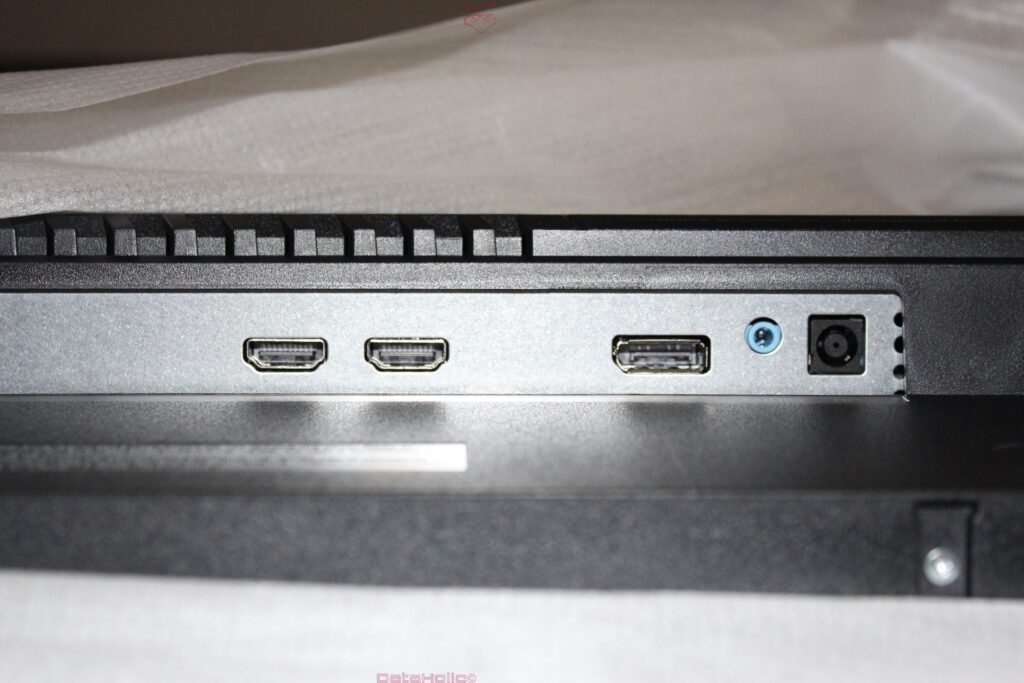
“Not everything that glitters is gold — but much of what works well is worth more than shine.”
Everyday Profile: Work Up Top, Play Down Below, All in One
Productivity
If you spend long hours reading, writing, or spreadsheeting, 4K/160 is a godsend. The clarity cuts down on eye strain, and the low-blue-light filter softens late-night sessions without killing contrast. Add PiP/PbP, and you can monitor a second device — a camera, console, or secondary PC — on the same screen.
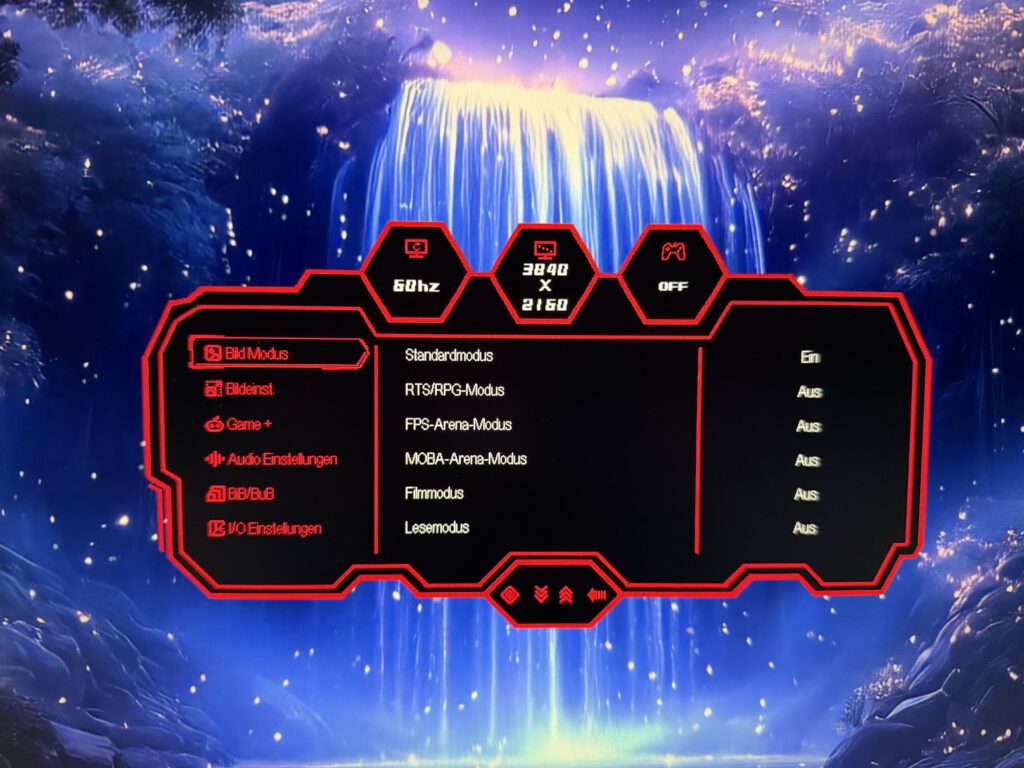
Media & Streaming
4K content looks immaculate on 27 inches. Smooth 160 Hz playback complements cinematic pacing, and the image modes are calibrated conservatively — a blessing for those who dislike overprocessed colors. Minor tweaks to brightness or sharpness are all that’s needed.
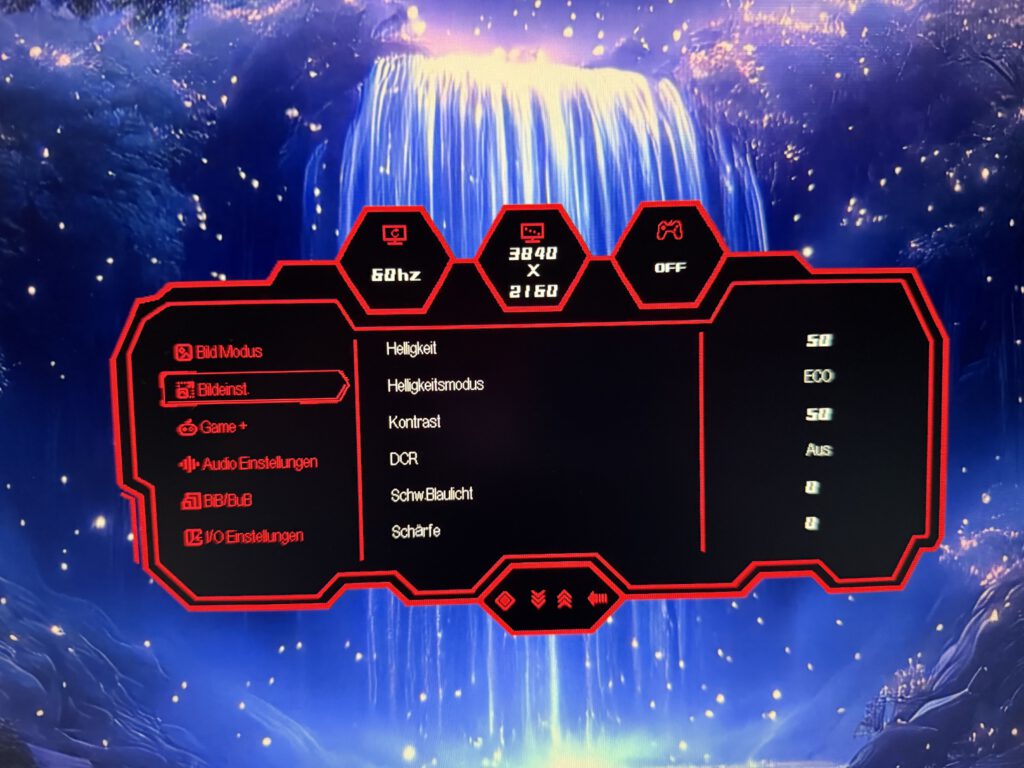
Gaming
Here’s where choice becomes power.
Detail and immersion? 4K/160.
Fluid gameplay with solid sharpness? QHD/160.
Hardcore responsiveness? FHD/320.
None of these are “right” or “wrong” — they’re situational. That flexibility is what makes the LC-M27UFD long-term appealing. It grows with your titles, your hardware, and even your mood.
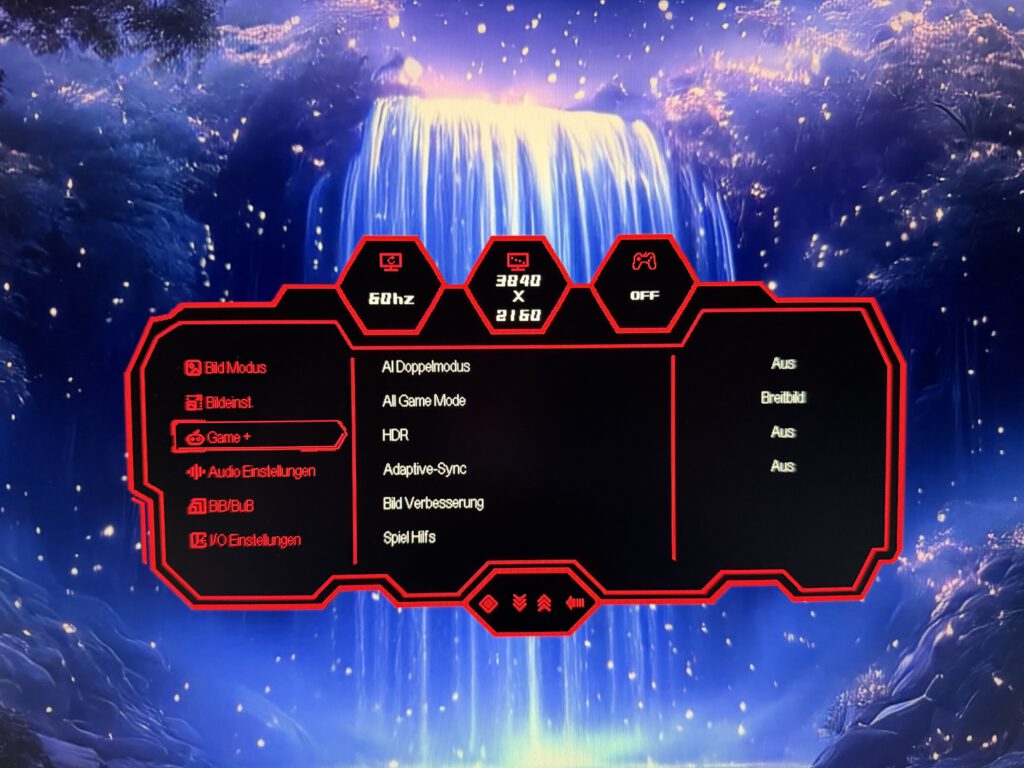
Audio Note: Volume Control in the OSD
A small but surprisingly handy feature — volume and mute can be adjusted directly in the OSD. Whether you’re hopping between calls, consoles, or YouTube breaks, not having to dive into system settings is a time-saver.
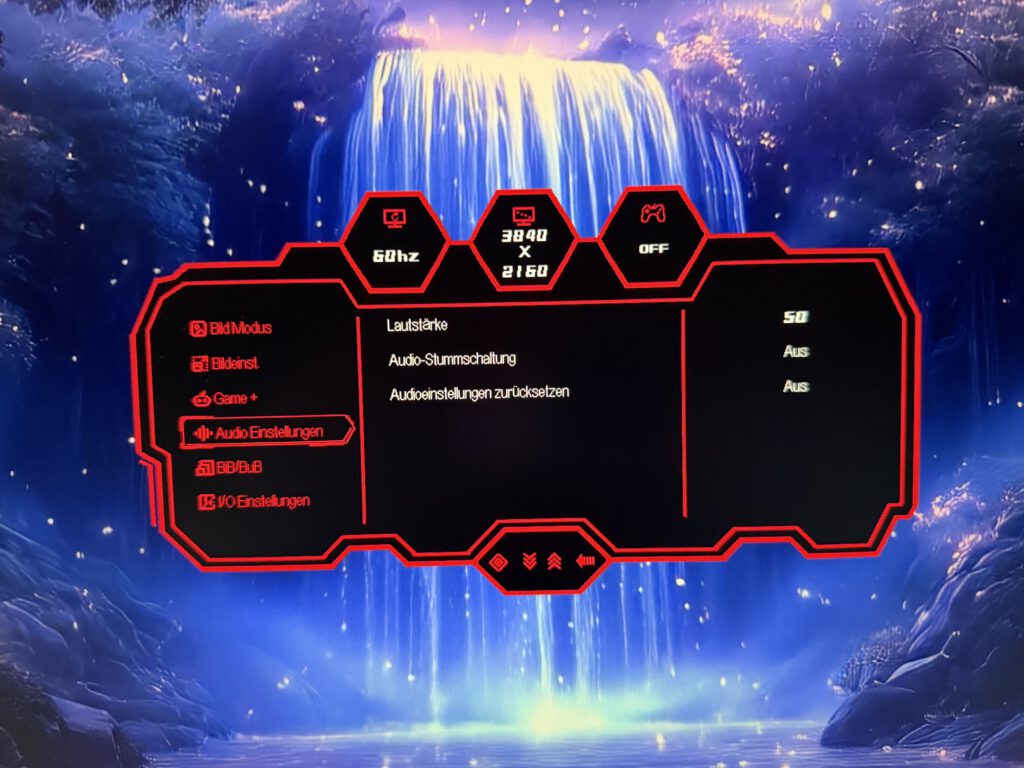
What Impresses — and Where the Limits Are
Strengths
- Versatility: 4K sharpness and high refresh speed — rarely so well-balanced.
- Ease of Use: Dedicated buttons, clean menus, smart defaults.
- Connectivity & Package: HDMI & DP with all cables included — ready out of the box.
- Stability: A solid stand that keeps its posture.
- Practical Features: Adaptive-Sync, PiP/PbP, DDC/CI, DSC — substance over flash.
Limitations
- 4K is “only” 160 Hz: For uncompromising 4K high-FPS esports, this isn’t the target profile — those players usually compete in FHD, where this monitor offers 320 Hz.
- HDR is modest — take it as a visual bonus, not a benchmark.
- Resolution switching is part of the experience — the LC-M27UFD’s full value comes from using its flexibility.
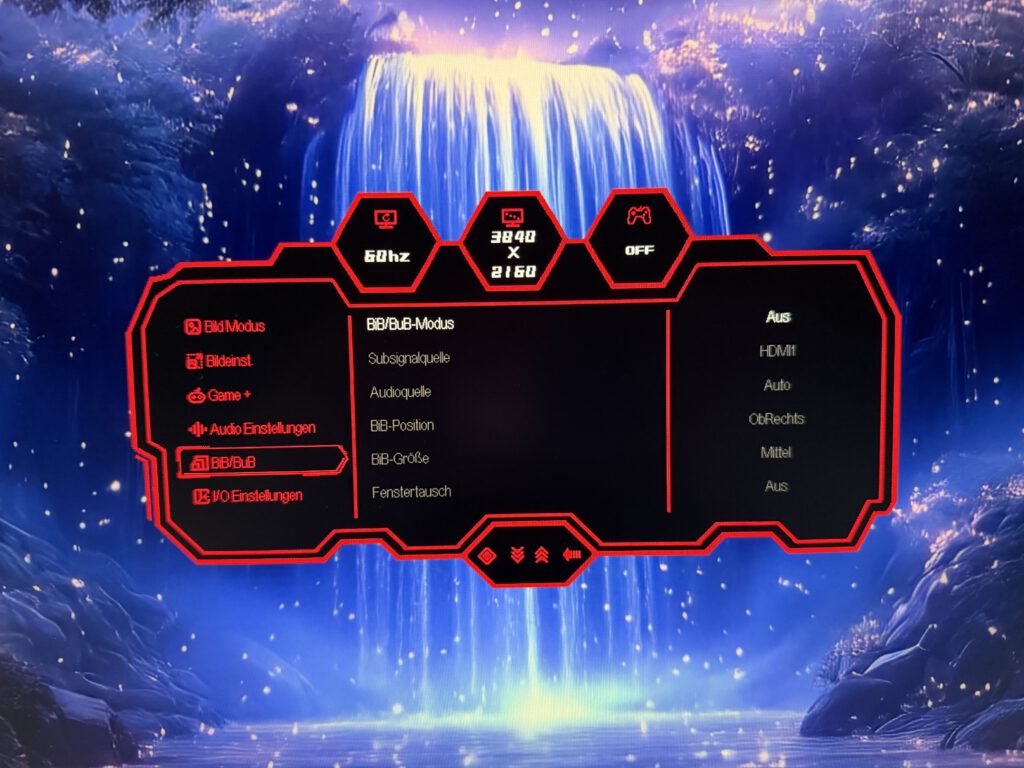
“The freedom to choose is worth more than the illusion of not needing to.”
Longevity & Value Impression
Monitors age slower than GPUs — and that’s where the LC-M27UFD shines. Today’s midrange graphics cards might not drive 4K/120, but this screen doesn’t box you in. You can run 4K/160 now, QHD/160 later, or vice versa. When you upgrade your system, the display stays relevant — it’s a toolbox, not a bottleneck.
Mechanically, it feels built for the long haul: no wobble, no drift, no fear of tilting. That understated quality doesn’t jump off the spec sheet but becomes obvious after months of daily use.
Stories from the Test Bench
- “The Crosshair Moment”: In FHD 320 Hz mode, aim and movement align perfectly — the screen reacts like an extension of your hand. You stop overcorrecting and simply hit.
- “The Spreadsheet Flow”: 4K/160 shows four extra columns and two more rows — less scrolling, more focus. Time saved isn’t a spec, but it’s a result.
- “The Meeting Juggle”: With PiP enabled, a console feed runs beside your main work window — no second monitor needed. You don’t realize how valuable this is until you try it once.
Recommendations by User Type
“I work by day, game by night.”
Strong recommendation. This is the LC-M27UFD’s core demographic: 4K/160 for clarity, QHD/160 for general gaming, and FHD/320 for competitive nights.
“I’m purely competitive — nothing else matters.”
You might prefer a dedicated FHD esports monitor. But if you appreciate flexibility and sometimes play single-player gems, this LC-Power offers a richer everyday experience.
“I want 4K with triple-digit refresh rates, always.”
Then this isn’t the model for you. The LC-M27UFD’s philosophy is honest: 4K is its clarity strength, high refresh is its option, not its default.
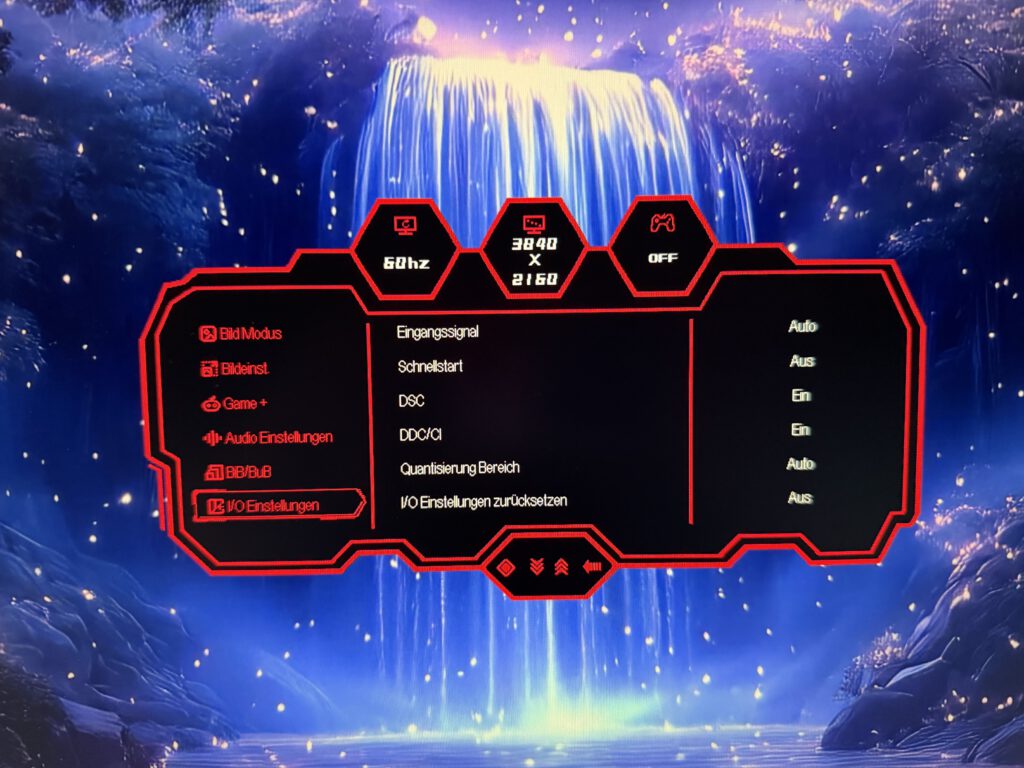
Value Beyond Price
Without quoting exact numbers, the package speaks for itself. Solid build, included accessories, simple usability, three distinct performance modes — that’s tangible value. In a market full of marketing buzzwords, LC-Power delivers real-world virtues instead.
“Fewer promises, more performance” – a virtue you can’t measure, but you can feel.
Practical Tips for Daily Use
- Remember your mode profiles: Mentally set up three modes — “Work and Gaming (4K/160)”, “Game (QHD/160)”, and “Ranked (FHD/320)”. This way, switching modes becomes routine rather than an experiment — assuming you have a very powerful graphics card.
- Enable Adaptive-Sync: especially useful in QHD/160 to eliminate tearing.
- Check Quantization Range: leave it on Auto unless your source demands otherwise.
- Use Eco and Blue-Light modes: great for long evenings.
- Try PiP/PbP: once you do, you’ll wonder how you managed without it.
Final Thought
The LC-Power LC-M27UFD isn’t a loud product — it’s a competent one. It doesn’t shout in specs, it delivers in practice. The 4K clarity makes long work sessions pleasant; the 160/320 Hz options make game sessions visibly smoother. Add a stable stand, full accessory set, and logical controls — these aren’t flashy highlights, but they matter every single day.
If a product leaves you feeling more adaptable than before, it’s done something right. That’s exactly how the LC-M27UFD feels: like a monitor that quietly expands what you can do — and invites you to make the most of it.
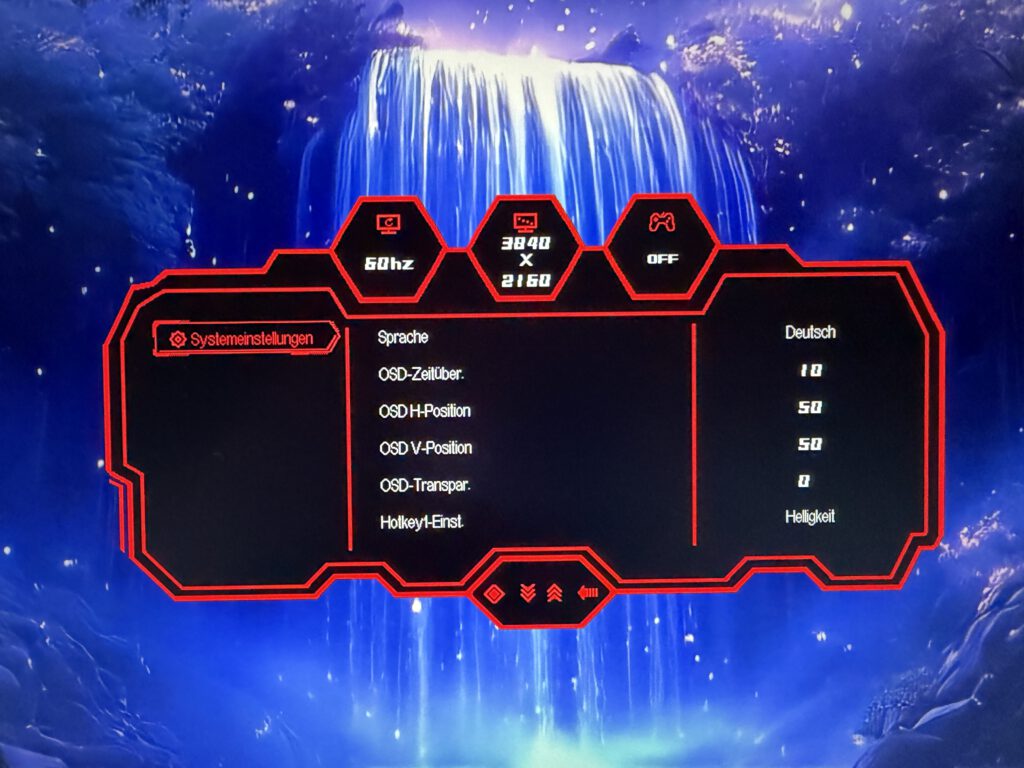
Test System
| Hardware | Manufacturer / Model |
|---|---|
| Mainboard | MSI MPG B850 Edge TI WiFi |
| CPU | Ryzen 9 9900X |
| RAM | Crucial Pro DDR5 32GB Kit (2×16) 6000 MHz |
| SSD | Kingston 2 TB PCIe 4.0 NVMe M.2 |
| CPU Cooler | MSI MPG Coreliquid A15 360 |
| GPU | MSI GeForce RTX 5070 Ti 16G Ventus 3X OC |
| PSU | MSI MPG A1000GS PCIe 5 |
| Case | MSI MPG Pano 110R PZ |
| Display | LC-Power LC-M27UFD |
| Keyboard | RJK MGA-68 |
| Mouse | MX Master 4 |
| Mousepad | MSI True Gaming |
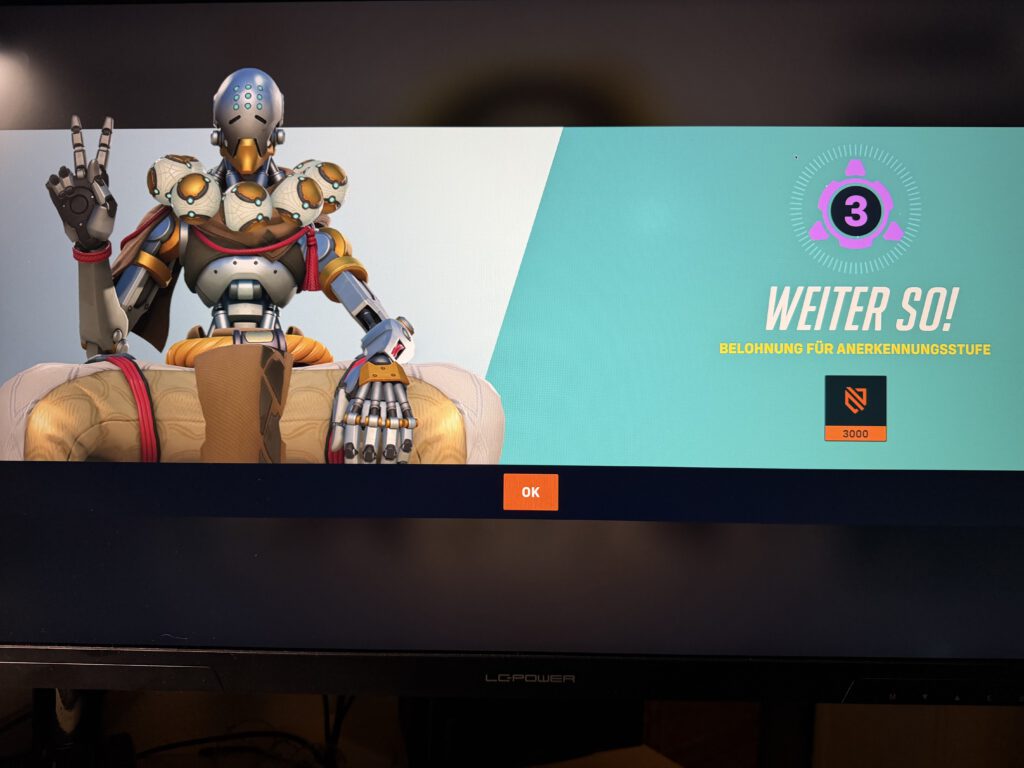
TL;DR – Pros & Cons
Pros
- 4K sharpness with 160 Hz for work, media, and gaming (with a suitable graphics card)
- QHD/160 Hz and FHD/320 Hz for gaming flexibility
- Dedicated buttons, clear OSD layout
- HDMI & DisplayPort with all cables included
- Rock-solid stand
- Adaptive-Sync, PiP/PbP, DDC/CI, DSC
Neutral
- HDR remains modest
- Requires manual mode switching to unlock full potential
Transparency Note (EU compliance):
The LC-Power LC-M27UFD featured in this review was provided to us by LC-Power as a temporary loan unit for testing purposes. This is not paid advertising.
LC-Power had no influence on the content, evaluation, or editorial independence of this article. All opinions expressed are based solely on our own practical experience.
We sincerely thank LC-Power for providing the monitor and for their trust in dataholic.de.
